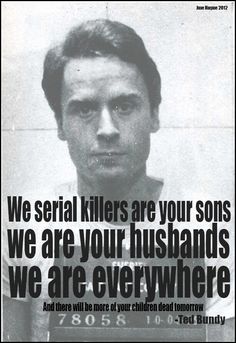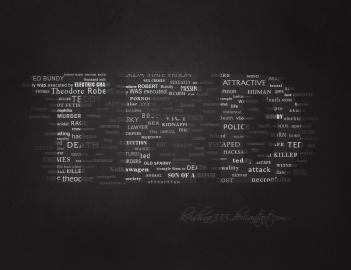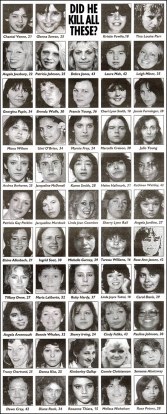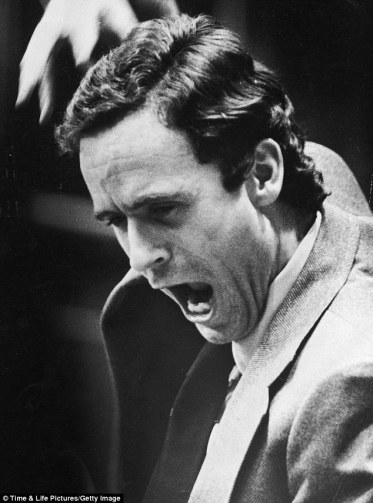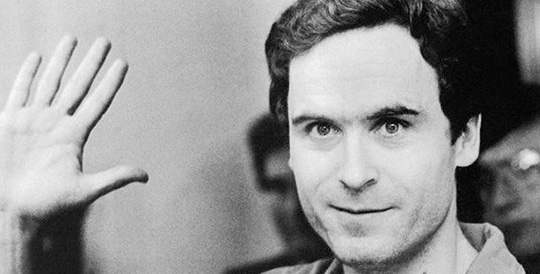Among those who evaluated him after his first arrest was Dr. Al C. Carlisle, a psychologist at the Utah State Prison. In his report he recognized Bundy’s compartments. “I feel that Mr. Bundy has not allowed me to get to know him and I believe there are many significant things about him that remain hidden.”
After talking with Bundy’s acquaintances, Carlisle saw two distinct personas. “The question was, how he could seem so normal and friendly at times and yet be evil at other times? This is the chameleon in him.”
He noted that Bundy saw women as more powerful than men and had described his mother as the most powerful person in their family. Carlisle decided that Bundy had a dependent personality disorder.
Yet another Utah psychologist, Gary Jorgenson, viewed Bundy as an intelligent young man who was “intact psychologically. In many regards he is the typical young Republican that he has been in the past.”
When experts evaluated him for court, the opinions were likewise in stark contrast.
In Florida, criminal expert Dr. Emanuel Tanay evaluated Bundy for competency to stand trial. “Throughout the interview,” he wrote, “Bundy related to me as if it was a social visit and not an examination initiated by his lawyer. He…disregarded whatever contributions I could make to save his life.”
Tanay found that Bundy’s intelligence coexisted with childish immaturity. His delight in playing games and getting attention undermined his own best interests. Tanay predicted that Bundy would ultimately renege on any plea deal: “It is my impression that a major factor is his deep-seated need to have a trial, which he views as an opportunity to confront and confound various authority figures…not only judges and prosecutors, but also his defense attorneys.” He testified that Bundy was not competent to stand trial.
The prosecution’s expert, Dr. Hervey Cleckley, disagreed. He said that Bundy was just a clever, self-absorbed psychopath who could handle himself well enough in legal proceedings.
Dorothy Ottnow Lewis, a psychiatrist from the New York University Medical Center, examined Bundy for Polly Nelson. According to Nelson, Lewis immediately diagnosed Bundy as bipolar, and then looked for evidence from his life. Bundy described his mother, and Lewis decided that his relationship with Louise had been superficial and cold.
Lewis later surmised that Bundy might have multiple personality disorder, and tried but failed to get him to describe his “entity” in this way. Bundy insisted that, although it had its own voice, it was not an alter personality. He’d majored in psychology. He knew what she meant.
In the end, Lewis had a third diagnosis: she told Nelson that she’d always doubted that true psychopaths existed, but now she thought that Bundy was one.
Dr. Charles Mutter asserted that there was no evidence of bipolar disorder. During an incompetency appeal, he stated that Bundy’s anger and depression were situational not clinical, and that no one had observed the manic courtroom behaviors during the Leach trial that Lewis attributed to him. Bundy’s arguments, Mutter said, had been reasonable and organized, which is inconsistent with bipolar disorder.
In a last-ditch effort to be “too important to kill,” Bundy met with Dr. James Dobson, a religious psychologist and crusader against pornography. Despite Bundy’s reputation as a manipulator, Dobson accepted his tearful confession as genuine.
On the video of this interview, Bundy appears sincere as he describes how he became addicted to pornography as a boy through detective magazines. This is what Dobson wanted to hear but it contradicted other accounts. To one detective, Bundy had pointed to cheerleader magazines as his inspiration, while he’d denied to Ann Rule that he’d ever read a detective magazine.
To Bundy’s surprise, none of his carefully selected interviewers initiated proceedings to save him. Despite his desire to be studied, he decided against leaving his brain to science.
